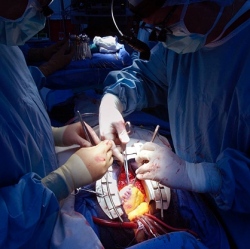
People who received the world’s first stem cell treatment for strokes have shown measurable reductions in disability and handicap a year after the injection into their damaged brains. Some can move limbs and manage everyday tasks that were impossible before they received an injection of neural progenitor stem cells.
Apart from physical rehabilitation, there are few treatments for people left severely disabled by a stroke. Demand for more options is high, with 800,000 new cases each year in the US and 150,000 in the UK.
"We’re encouraged, and it’s a nice progressive piece of news," says Michael Hunt, the chief executive officer of ReNeuron, the company in Guildford, UK, that developed the treatment. "We must be circumspect, but we are seeing what seems to be a general trend towards improvement in a disparate group of patients," he says.
ReNeuron presented its latest results on the first 11 patients on 7 May in Nice, France, at the 23rd European Stroke Conference. They build on interim findings released last year.
The patients in the PISCES trial (Pilot Investigation of Stem Cells in Stroke) had all suffered their strokes at least six months before treatment and were all chosen because their symptoms had plateaued, making any improvements more likely to be the result of treatment.
There were improvements in median scores on all five scales used to measure the patients’ recovery. On a score that measures quality of life from 0 to 100, patients began with a median score of 45, but within a year this had risen by 18 points, a 40 per cent improvement.
